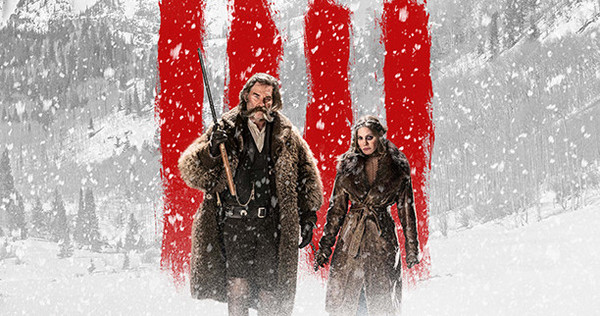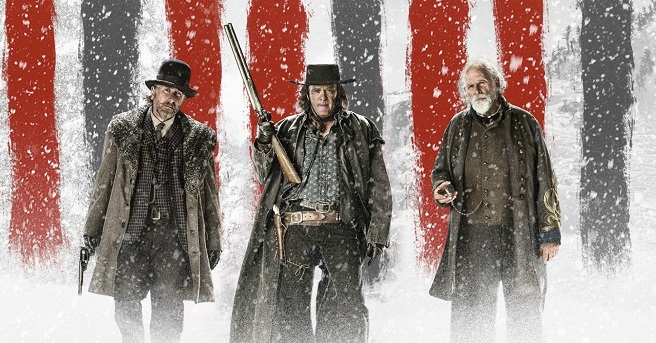« Coffee Break | Main | Coffee Break »
December 31, 2015
The Hateful 8

Quentin Tarantino - 2015
The Weinstein Company Digital 70 mm
The downside - I was originally planning to see The Hateful 8 at the first Christmas Day showing. I bought a ticket for the 11:40 am show as offered through Fandango. By chance, on Christmas Eve, I found out that someone at Regal Theaters decided that there would be no 11:40 am show. Of course it was too late to get a ticket for the 3:20 show which was sold out, and between being reliant on public transportation and having to work on Saturday, December 26, the only available show, starting after 10 pm was much too late to consider. Primarily because it was my next day off, I changed my ticket for the 11:40 am show on December 31.
The Regal Continental here in Denver has one of the biggest screens in town. Back when it was a single screen theater, I made a point of seeing several films in part to enjoy the scale of seeing movies on such a huge screen. That screen was given over to a space fantasy that has dominated most of the screens not only in the US but over the world. For those of us in Denver, the format for The Hateful 8 was digital 70 mm, shown in a smaller auditorium seating up to 274 people. The aspect ratio was correct, but the screen was too small for what Tarantino was visually trying to achieve in filming in Ultra Panavision 70. And even with a week's worth of past screenings, there were still a couple of glitches, a hiccup when the overture began, and the screen going dark during the last few minutes, temporarily making the audience wonder if we would see the film end correctly - eventually we did.

I made a point of seeing the 70 mm version because it seemed like an opportunity to be part of film history of sorts. Maybe not like being the first to see The Jazz Singer, for example, but because the choice of filming format and the insistence on the part of Tarantino to make a version that would be different from the "standard" version opening tomorrow, I figured I should make an effort to see what the fuss was about.
I sure as hell wish I saw The Hateful 8 on a giant screen, and maybe, just maybe, when "the force" dissipates, I'll be able to see Tarantino's film the way he wants it to be seen. That said, I like The Hateful 8 more than previous Tarantino films, probably because he's not trying so hard to cram in his references to other films. He's pushing it a bit with a character named Daisy Domergue, but it bothered me less that a general in Inglorious Basterds named Ed Fenech. And Jennifer Jason Leigh is so wonderful as the bad tempered, uncouth, scheming prisoner of Kurt Russell that she could have been named Daisy Duke for that matter. I wish I had seen her performance early enough for the Online Film Critics Society awards, but hopefully, those with later deadlines will acknowledge Leigh's performance.
I would have to disagree with those who call The Hateful 8 a western. I think it better to describe it as a post Civil War giallo. What makes me think of the film that was is the choice of music by Ennio Morricone. In addition to some original music, Tarantino has used music originally written for John Boorman's Exorcist II: The Heretic and John Carpenter's version of The Thing. It is significant that Tarantino chose note to reuse any of Morricone's scores for westerns. Even setting aside the well know work done for Sergio Leone, there were scores for the other Sergios - Corbucci and Sollima, as well as scores for Don Taylor's Five Man Army and Don Siegel's Two Mules for Sister Sara. Instead, Tarantino reuses music composed for two horror films.
In her study of the films by Dario Argento, Maitland McDonagh explains the origin giallo, originally used to describe crime novels published in Italy with yellow covers, many written by Agatha Christie. It does not seem coincidental, based on the basic plot and racial tensions in The Hateful 8, that the basic story is similar to Christie's And Then there were None, a book originally published in Britain with the title, Ten Little Niggers. Like the best giallo films, nobody and nothing is to be taken at face value in The Hateful 8, and almost everyone has a reason to be judged guilty.
Posted by Peter Nellhaus at December 31, 2015 05:49 PM
